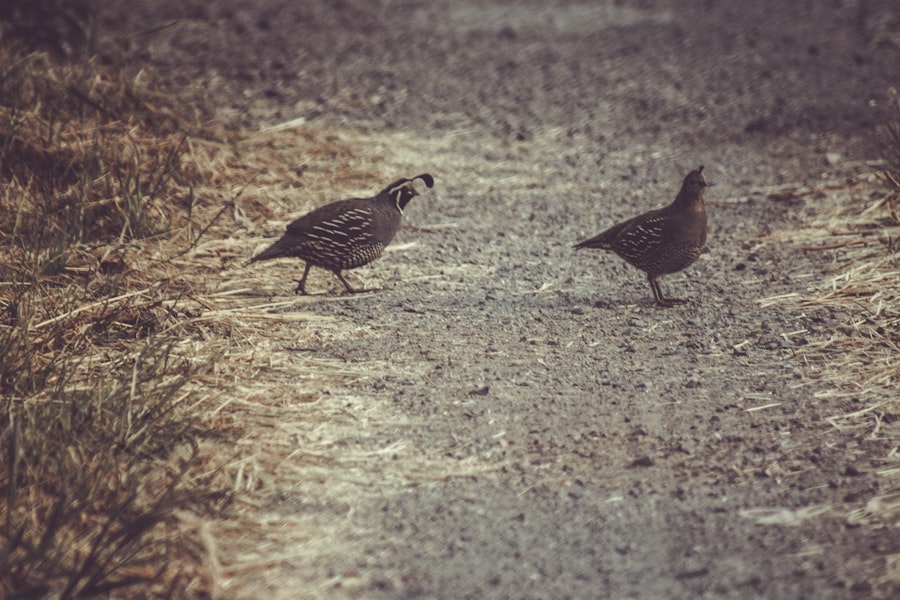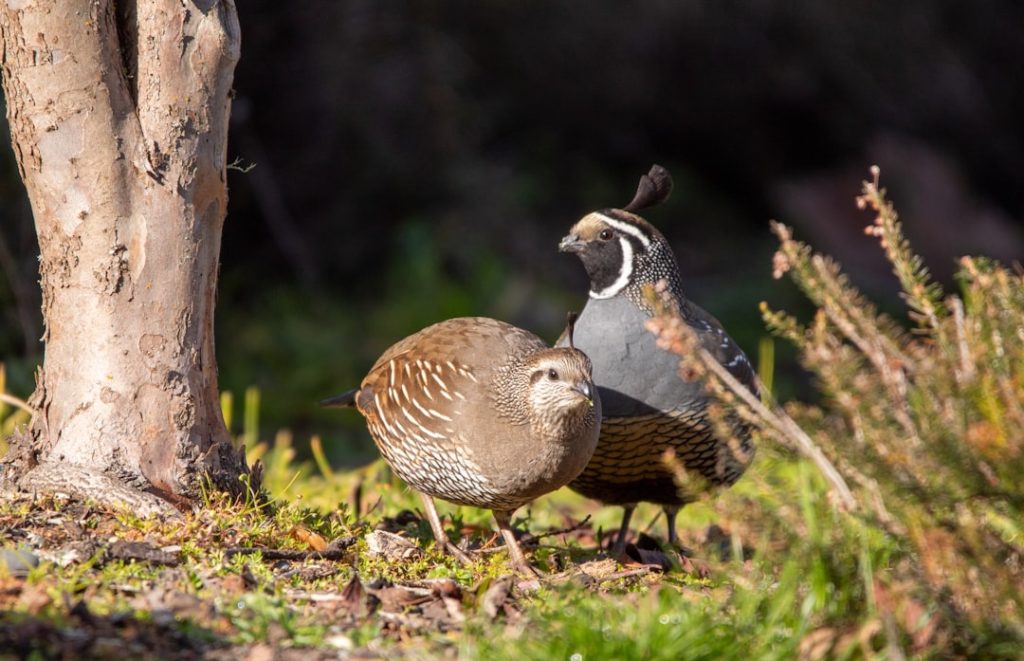Quail are small, ground-dwelling birds that are known for their delicious and nutritious eggs. There are several different breeds of quail that are commonly raised for egg production, each with its own unique characteristics and benefits. In this article, we will explore some of the most popular quail breeds for egg production, including the Coturnix quail, Bobwhite quail, California Valley quail, Gambel’s quail, Japanese quail, and Button quail. Each of these breeds has its own distinct qualities that make it well-suited for egg production, and understanding the differences between them can help you choose the best breed for your specific needs.
Table of Contents
- 1 Coturnix Quail: The Most Common Breed for Egg Production
- 2 Bobwhite Quail: A Popular Breed for Both Meat and Eggs
- 3 California Valley Quail: A Colorful Breed Known for Its Eggs
- 4 Gambel’s Quail: A Unique Breed for Egg Production
- 5 Japanese Quail: A Small and Prolific Egg Producer
- 6 Button Quail: A Tiny Breed with Small but Tasty Eggs
- 7 FAQs
Key Takeaways
- Coturnix quail is the most common breed for egg production due to its high egg-laying capacity and ease of care.
- Bobwhite quail is a popular breed for both meat and eggs, making it a versatile option for quail farmers.
- California Valley quail is known for its colorful appearance and is a popular choice for egg production.
- Gambel’s quail is a unique breed that is valued for its eggs, making it a distinctive option for quail farmers.
- Japanese quail is a small breed that is highly prolific in egg production, making it a popular choice for small-scale quail farming.
Coturnix Quail: The Most Common Breed for Egg Production
Coturnix quail, also known as Japanese quail, are perhaps the most popular breed for egg production. These small birds are known for their prolific egg-laying abilities, with hens laying up to 300 eggs per year. Coturnix quail eggs are prized for their rich flavor and high nutritional value, making them a favorite among chefs and home cooks alike. In addition to their excellent egg production, Coturnix quail are also relatively easy to care for and can be raised in small spaces, making them an ideal choice for backyard farmers and homesteaders. These quail come in a variety of colors, including brown, white, and speckled, adding to their visual appeal. Overall, Coturnix quail are an excellent choice for anyone looking to raise quail for egg production.
Coturnix quail are known for their small size and gentle disposition, making them easy to handle and care for. They are also relatively quiet birds, making them well-suited for urban or suburban environments where noise may be a concern. In addition to their egg-laying abilities, Coturnix quail are also raised for their meat, which is lean and flavorful. This dual-purpose nature makes them a practical choice for farmers looking to raise quail for both eggs and meat. Whether you are a seasoned farmer or new to raising quail, Coturnix quail are a versatile and rewarding breed to consider for egg production on your farm or homestead.
Bobwhite Quail: A Popular Breed for Both Meat and Eggs
Bobwhite quail are another popular breed that is commonly raised for both meat and eggs. These birds are native to North America and are known for their distinctive call, which sounds like “bob-white.” While they are primarily raised for their meat, Bobwhite quail also produce delicious and nutritious eggs that are slightly larger than those of Coturnix quail. Hens typically lay around 100 eggs per year, making them a good choice for farmers looking to raise quail for both eggs and meat. Bobwhite quail are relatively easy to care for and can be raised in outdoor pens or aviaries. They are hardy birds that can adapt to a variety of climates, making them a good choice for farmers in different regions.
In addition to their practical benefits, Bobwhite quail are also popular among hunters due to their fast flight and challenging behavior. This makes them a popular choice for hunting preserves and game farms, where they are released into the wild for hunting purposes. Whether you are interested in raising quail for eggs, meat, or hunting, Bobwhite quail are a versatile breed that offers a range of benefits. Their distinctive call and attractive plumage also make them an interesting addition to any farm or homestead.
California Valley Quail: A Colorful Breed Known for Its Eggs
California Valley quail, also known as California quail, are a colorful and attractive breed that is known for both their beauty and their egg-laying abilities. These birds are native to the western United States and are often seen running across open fields or perched on fences and shrubs. California Valley quail produce small, speckled eggs that are prized for their rich flavor and high nutritional value. Hens typically lay around 100 eggs per year, making them a good choice for farmers looking to raise quail for eggs. In addition to their egg production, California Valley quail are also raised for their meat, which is lean and flavorful.
One of the most distinctive features of California Valley quail is their striking plumage, which includes a bold black plume on top of their heads and a chestnut brown belly with white speckles. This makes them an attractive addition to any farm or homestead, adding a touch of natural beauty to the landscape. California Valley quail are relatively easy to care for and can be raised in outdoor pens or aviaries. They are hardy birds that can adapt to a variety of climates, making them a good choice for farmers in different regions. Whether you are interested in raising quail for eggs, meat, or simply as an attractive addition to your farm, California Valley quail are a versatile breed that offers a range of benefits.
Gambel’s Quail: A Unique Breed for Egg Production
Gambel’s quail are a unique breed that is native to the southwestern United States and northern Mexico. These birds are known for their distinctive appearance, with a striking black face outlined in white and a topknot plume that curves forward over their heads. Gambel’s quail produce small, speckled eggs that are prized for their rich flavor and high nutritional value. Hens typically lay around 100 eggs per year, making them a good choice for farmers looking to raise quail for eggs. In addition to their egg production, Gambel’s quail are also raised for their meat, which is lean and flavorful.
One of the most interesting features of Gambel’s quail is their behavior, as they are known for their social nature and tendency to gather in large coveys. This makes them an interesting addition to any farm or homestead, as they provide entertainment with their lively interactions and calls. Gambel’s quail are relatively easy to care for and can be raised in outdoor pens or aviaries. They are hardy birds that can adapt to a variety of climates, making them a good choice for farmers in different regions. Whether you are interested in raising quail for eggs, meat, or simply as an interesting addition to your farm, Gambel’s quail are a unique breed that offers a range of benefits.
Japanese Quail: A Small and Prolific Egg Producer

Japanese quail, also known as Coturnix quail, are a small breed that is known for its prolific egg-laying abilities. These birds are native to East Asia and have been domesticated for thousands of years. Japanese quail produce small, speckled eggs that are prized for their rich flavor and high nutritional value. Hens typically lay around 300 eggs per year, making them one of the most prolific egg-laying breeds of quail. In addition to their excellent egg production, Japanese quail are also relatively easy to care for and can be raised in small spaces, making them an ideal choice for backyard farmers and homesteaders.
Japanese quail come in a variety of colors, including brown, white, and speckled, adding to their visual appeal. They are known for their small size and gentle disposition, making them easy to handle and care for. In addition to their egg-laying abilities, Japanese quail are also raised for their meat, which is lean and flavorful. This dual-purpose nature makes them a practical choice for farmers looking to raise quail for both eggs and meat. Whether you are a seasoned farmer or new to raising quail, Japanese quail are a versatile and rewarding breed to consider for egg production on your farm or homestead.
Button quail are the smallest breed of quail and are known for their tiny size and delicate appearance. These birds produce small eggs that pack a big punch in terms of flavor and nutritional value. While they may not lay as many eggs as some other breeds of quail, the eggs they do produce are prized for their rich flavor and high nutritional content. Button quail come in a variety of colors, including silver, cinnamon, white, and pearl gray, adding to their visual appeal.
Button quail are relatively easy to care for and can be raised in small spaces, making them an ideal choice for urban or suburban farmers with limited space. They have a gentle disposition and can be kept in small groups without issue. In addition to their egg-laying abilities, Button quail are also raised for their meat, which is lean and flavorful. This dual-purpose nature makes them a practical choice for farmers looking to raise quail for both eggs and meat. Whether you are new to raising quail or looking to add a unique breed to your farm or homestead, Button quail offer a range of benefits in a tiny package.
In conclusion, there are several different breeds of quail that are well-suited for egg production, each with its own unique characteristics and benefits. Whether you are looking for prolific egg-layers like the Coturnix or Japanese quail, dual-purpose breeds like the Bobwhite or California Valley quail, or unique breeds like the Gambel’s or Button quail, there is sure to be a breed that meets your specific needs. By understanding the differences between these breeds and considering factors such as egg production, meat quality, temperament, and space requirements, you can choose the best breed of quail for your farm or homestead. With the right care and management, raising quail can be a rewarding endeavor that provides you with delicious eggs and meat while adding beauty and interest to your farm or homestead.
If you’re interested in raising quail for eggs, you might also want to consider the housing options for your poultry. A well-designed chicken coop can provide a safe and comfortable environment for your quail to thrive and lay eggs. For tips on where to put a chicken coop, large chicken coop ideas, and finding a chicken coop in Grand Island, NE, check out this informative article on PoultryWizard: Where to Put Chicken Coop. This resource can help you create the ideal living space for your quail, ensuring they produce high-quality eggs for your enjoyment.
FAQs
What are the different breeds of quail for eggs?
There are several different breeds of quail that are commonly raised for their eggs, including the Coturnix quail, Bobwhite quail, and California quail.
What is the Coturnix quail?
The Coturnix quail, also known as the Japanese quail, is one of the most popular breeds for egg production. They are known for their high egg production, small size, and ease of care.
What is the Bobwhite quail?
The Bobwhite quail is another popular breed for egg production. They are native to North America and are known for their distinctive call and hardiness.
What is the California quail?
The California quail is a popular breed for both egg production and hunting. They are known for their striking appearance and are native to the western United States.
What are the differences between these quail breeds for egg production?
Each breed of quail has its own unique characteristics and advantages for egg production. The Coturnix quail is known for its high egg production, while the Bobwhite quail is valued for its hardiness and adaptability. The California quail is also a good egg producer and is known for its striking appearance.
Which breed of quail is best for egg production?
The best breed of quail for egg production will depend on your specific needs and preferences. The Coturnix quail is often recommended for its high egg production and ease of care, but the Bobwhite quail and California quail also have their own advantages.
Meet Walter, the feathered-friend fanatic of Florida! Nestled in the sunshine state, Walter struts through life with his feathered companions, clucking his way to happiness. With a coop that’s fancier than a five-star hotel, he’s the Don Juan of the chicken world. When he’s not teaching his hens to do the cha-cha, you’ll find him in a heated debate with his prized rooster, Sir Clucks-a-Lot. Walter’s poultry passion is no yolk; he’s the sunny-side-up guy you never knew you needed in your flock of friends!







